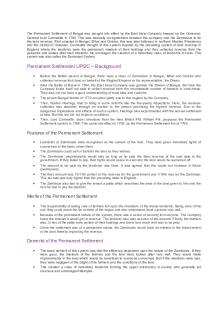Permanent and induced magnetism PDF

| Title | Permanent and induced magnetism |
|---|---|
| Course | Chemistry |
| Institution | University of Salford |
| Pages | 2 |
| File Size | 41.5 KB |
| File Type | |
| Total Downloads | 109 |
| Total Views | 150 |
Summary
Lecture notes these notes can be personalized and used for revision. They include diagrams for understanding the content!...
Description
Permanent and induced magnetism, magnetic forces and fields Poles of a magnet A magnet can exert a force on another nearby magnet and magnetic materials such as iron. Magnets have two poles: a north pole a south pole The magnetic force is strongest near the magnet's poles.
The rules of magnetism Two magnets will either attract or repel each other in the following way:
like poles (N–N or S–S) repel unlike poles (N–S or S–N) attract Magnetic forces are non-contact forces – this means that magnets affect each other without touching. It is an example of a force acting at a distance.
Induced and permanent magnetism Iron, steel, nickel and cobalt are magnetic materials. They have magnetic properties and are attracted to either pole of a magnet.
Permanent magnets A permanent magnet is often made from a magnetic material such as steel. A permanent magnet always causes a force on other magnets, or on magnetic materials. Key features of a permanent magnet:
it produces its own magnetic field the magnetic field cannot be turned on and off – it is there all the time Bar magnets and horseshoe magnets are examples of permanent magnets.
Induced magnets Unlike a permanent magnet, an induced magnet only becomes a magnet when it is placed in a magnetic field. The induced magnetism is quickly lost when the magnet is removed from the magnetic field.
The iron filings in the image become induced magnets when they are near the bar magnet. Like all induced magnets:
they are only attracted by other magnets, they are not repelled they lose most or all of their magnetism when they are removed from the magnetic field
Testing for magnetism A permanent magnet can:
attract or repel another permanent magnet attract a magnetic material (but not repel it) Magnetic fields A magnetic field is the region around a magnet where a force acts on another magnet or on a magnetic material.
Detecting magnetic fields A magnetic field is invisible, but it can be detected using a magnetic compass. A compass contains a small bar magnet on a pivot so that it can rotate. The compass needle points in the direction of the Earth's magnetic field, or the magnetic field of a magnet.
Magnetic fields can be mapped out using small plotting compasses:
Place the plotting compass near the magnet on a piece of paper. Mark the direction the compass needle points. Move the plotting compass to many different positions in the magnetic field, marking the needle direction each time. Join the points to show the field lines. The needle of a plotting compass points to the south pole of the magnet....
Similar Free PDFs

Permanent and induced magnetism
- 2 Pages

Electricity and Magnetism
- 2 Pages

Purcell electricity and magnetism
- 868 Pages

Electricity and Magnetism Unit One
- 25 Pages

Permanent Magnet Moving Coil
- 3 Pages

Magnetism Summary Sheet
- 2 Pages

Magnetism Multiple choice
- 7 Pages
Popular Institutions
- Tinajero National High School - Annex
- Politeknik Caltex Riau
- Yokohama City University
- SGT University
- University of Al-Qadisiyah
- Divine Word College of Vigan
- Techniek College Rotterdam
- Universidade de Santiago
- Universiti Teknologi MARA Cawangan Johor Kampus Pasir Gudang
- Poltekkes Kemenkes Yogyakarta
- Baguio City National High School
- Colegio san marcos
- preparatoria uno
- Centro de Bachillerato Tecnológico Industrial y de Servicios No. 107
- Dalian Maritime University
- Quang Trung Secondary School
- Colegio Tecnológico en Informática
- Corporación Regional de Educación Superior
- Grupo CEDVA
- Dar Al Uloom University
- Centro de Estudios Preuniversitarios de la Universidad Nacional de Ingeniería
- 上智大学
- Aakash International School, Nuna Majara
- San Felipe Neri Catholic School
- Kang Chiao International School - New Taipei City
- Misamis Occidental National High School
- Institución Educativa Escuela Normal Juan Ladrilleros
- Kolehiyo ng Pantukan
- Batanes State College
- Instituto Continental
- Sekolah Menengah Kejuruan Kesehatan Kaltara (Tarakan)
- Colegio de La Inmaculada Concepcion - Cebu








